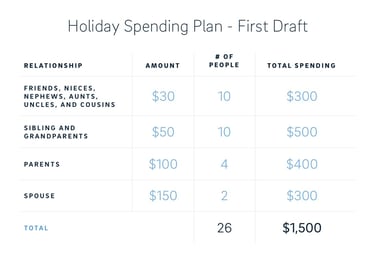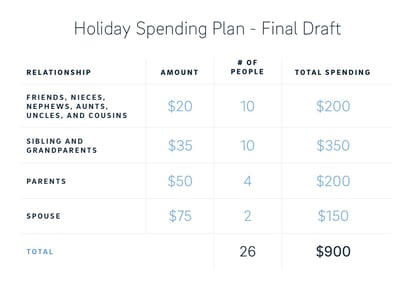How Our Family Conquered Overspending on the Holidays
BrightPlan Team

My wife and I got serious about budgeting the year we got married. We used the “envelope system”, made popular by Dave Ramsey, to set aside cash for key expenses every month and give every dollar a mission. We stayed on track for the most part with one exception: holiday spending.
For three years in a row, we enjoyed a solid year of coordinated spending until it came time to purchase gifts. We found ourselves ringing in each New Year with a pile of credit card debt from spending on loved ones because we felt we had no other option.
This made us sick to our stomach every time, forcing us to tighten up our budget for 6 months just to dig out of the hole. Right as our financial situation began to normalize, December would roll around again. Wash. Rinse. Repeat.
Planning for Irregular Expenses
Three years ago, as we anxiously mulled over our annual tradition of overspending, something clicked. The issue wasn’t spending money on friends and family for the holidays. Our budget worked most of the time and made covering regular month-to-month expenses a breeze.
The problem was our budget did not account for irregular or unexpected expenses. In addition to having no emergency fund, we had no clue how much we would spend on gifts each year. So together we decided to make some proactive changes.
Developing Our Holiday Spending Plan
Our first order of business was to decide, in advance, who we would buy gifts for and how much to spend on each person. This exercise revealed so much. Our first attempt at setting spending goals looked something like this:

While our spending targets for each individual person seemed reasonable, the total added up to be much larger than we anticipated. This explained why we were spending so much more than we thought we should be!
So, we made some adjustments that to each category that fit better with our budget while still giving us room to honor the people we care about.

Setting Up Our Special Occasions Fund
We then determined how many paychecks we had between February 1st and November 15th and divided our total by that number. With 20 checks left, we only needed to put away $45 per paycheck to have the cash ready to buy what we wanted for the holidays. Broken up into bite-size pieces, this felt very doable, even for a couple of college kids with very little income.
The final bit of planning was opening a new savings account specifically for the holidays. We separated it from our checking account and emergency fund, so we could track our progress and feel completely free to spend that money when the time came.
The Planning Pays Off
Small adjustments to the rest of our budget barely registered in day-to-day living, but by the end of the year we had hit our savings target. We were overjoyed. And that year, (and every year since), we were able to avoid going into debt and buy the gifts we wanted to, all without the guilt and financial stress that dampened our joy in years past. The final benefit was the teamwork and communication that came from putting a plan together and working it all year long.
What a relief! This strategy of saving for one-time expenses worked so well that we expanded our “Special Occasions Fund” to include birthdays, anniversaries, weddings, and baby showers – with an appropriate budget for each. This remains one of the most valuable saving strategies we use to manage our cash flow today.
Save for Your Special Occasions
Having a plan made all the difference, and marked a turning point in how we budget for annual expenses. So, what’s busting your budget? If you find yourself climbing out of the same hole every year like us, a little planning can go a long way.
Consider setting up your own fund in BrightPlan to break the cycle and spend guilt-free. A Custom Goal can help you set your goal and track your progress. It gives you the flexibility to name your goal, set a target amount, give yourself a deadline, and establish a regular investment plan.
